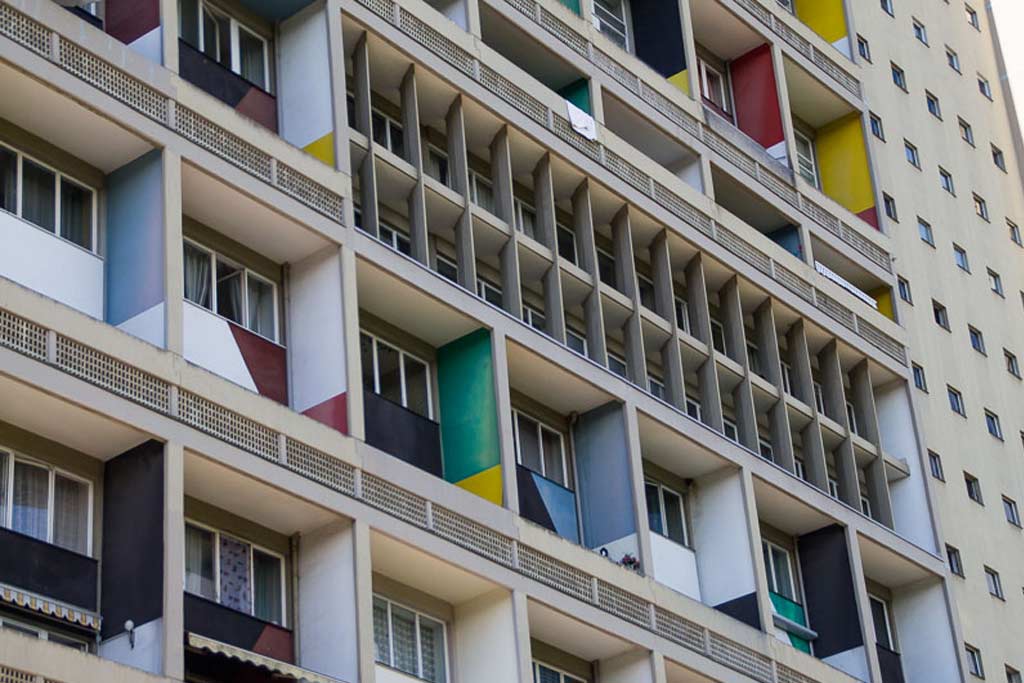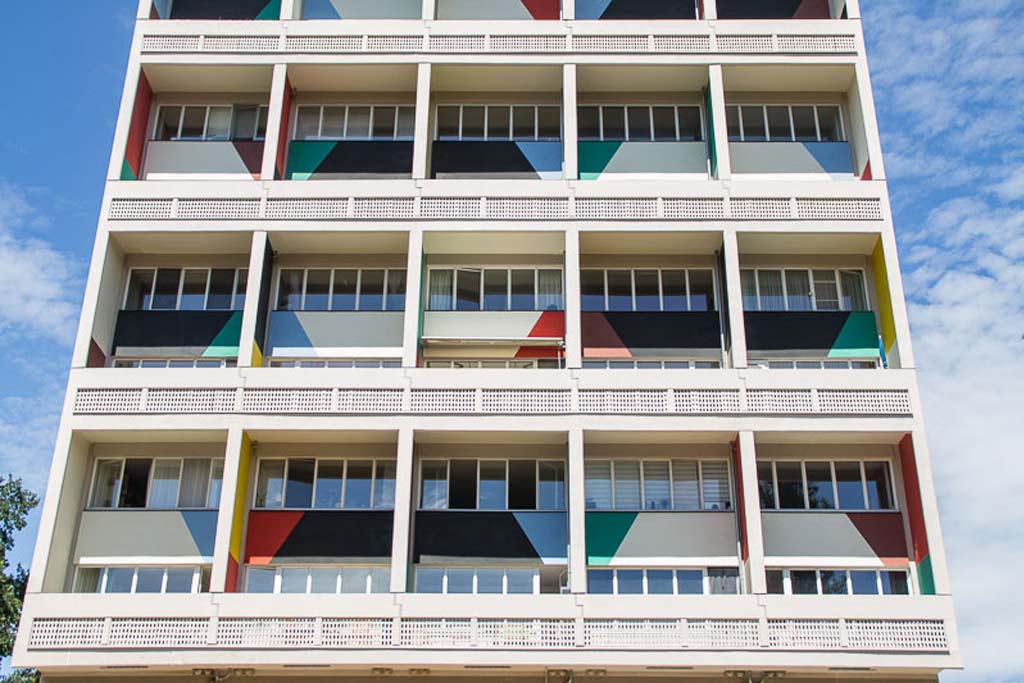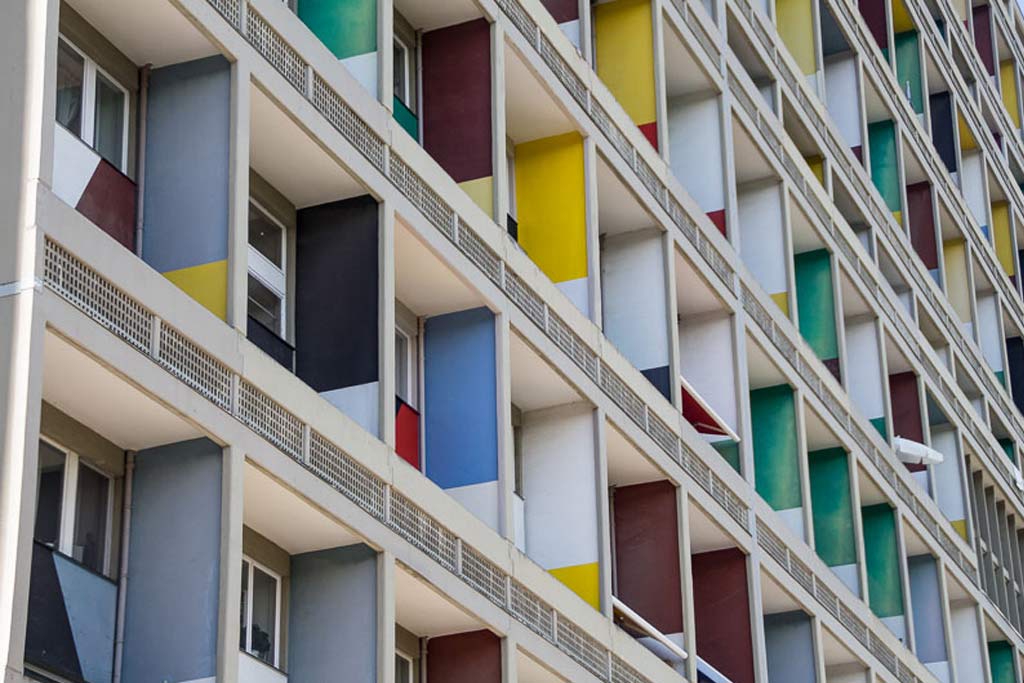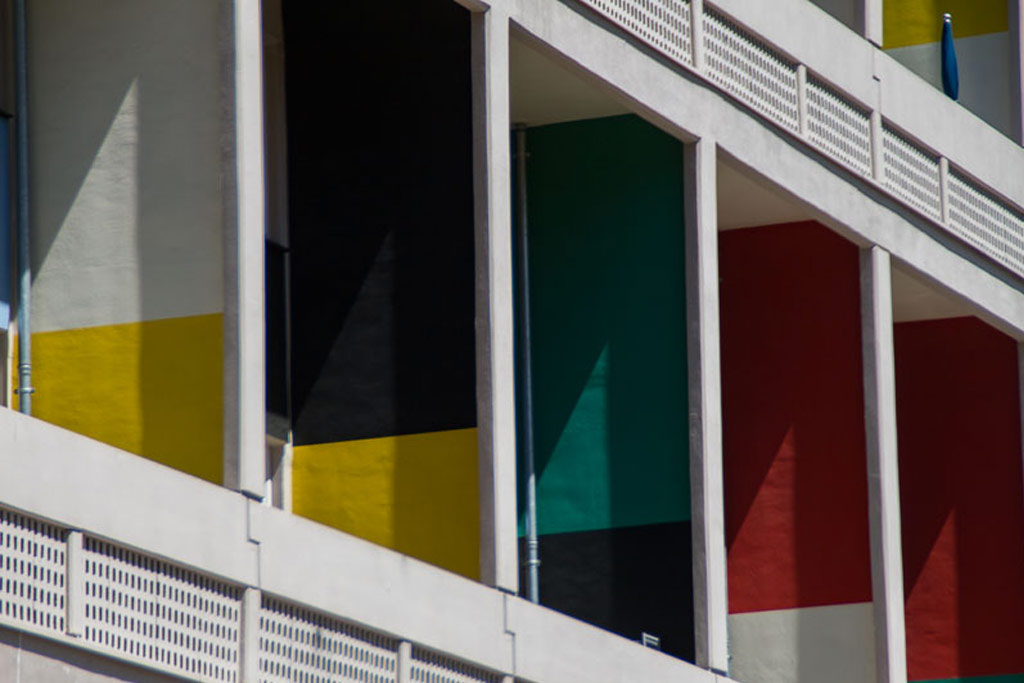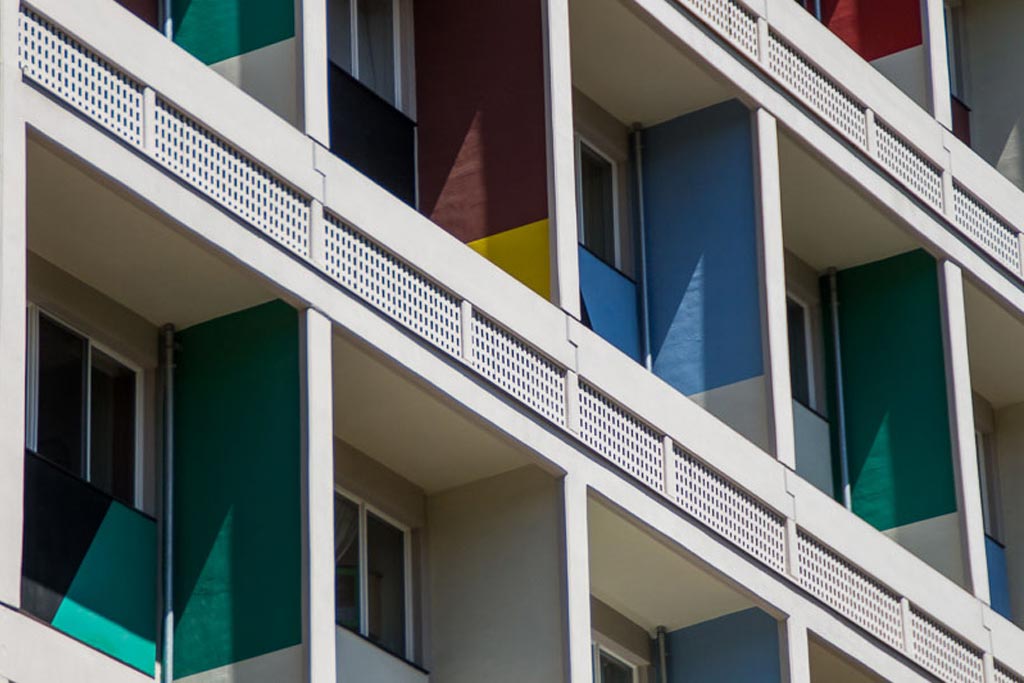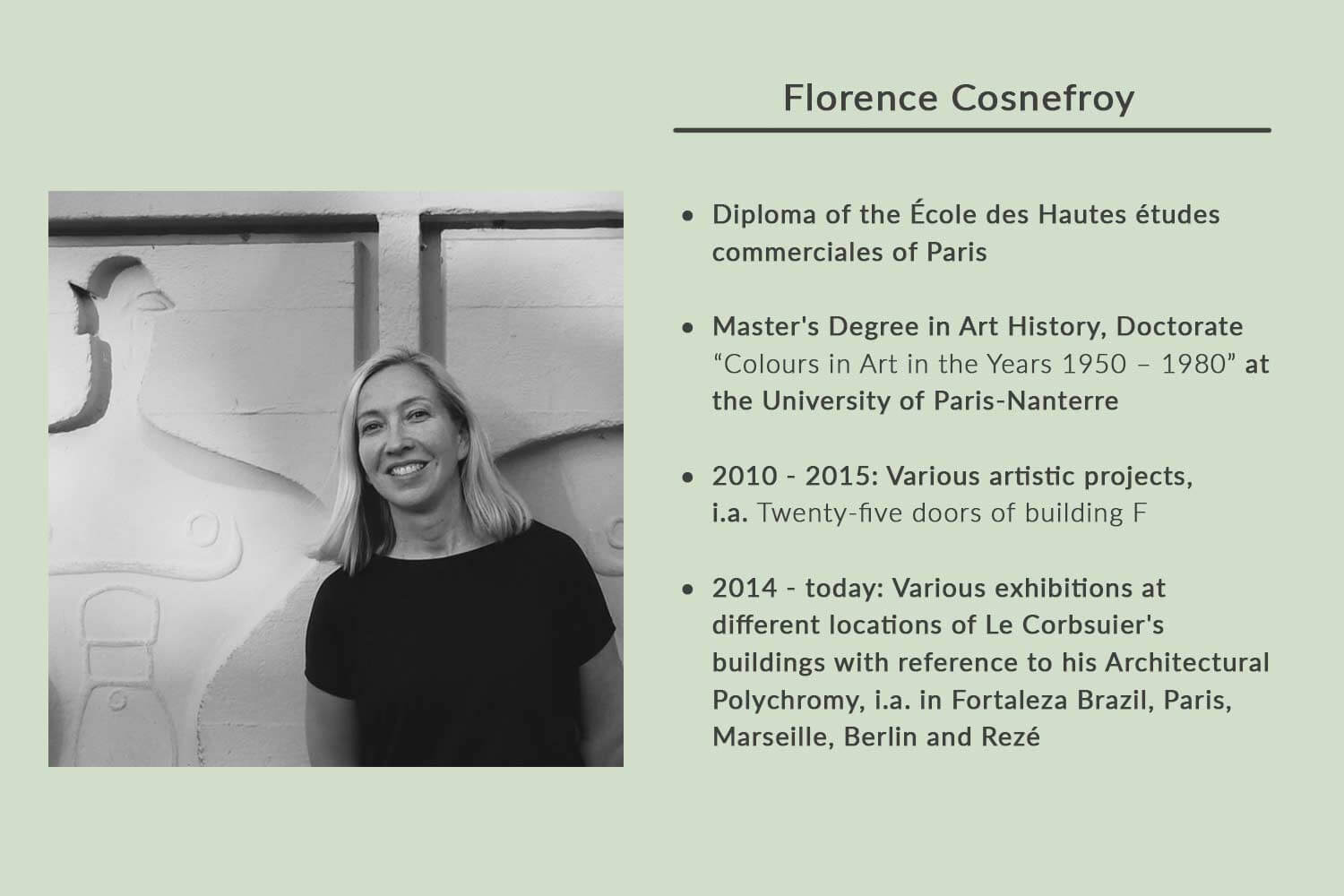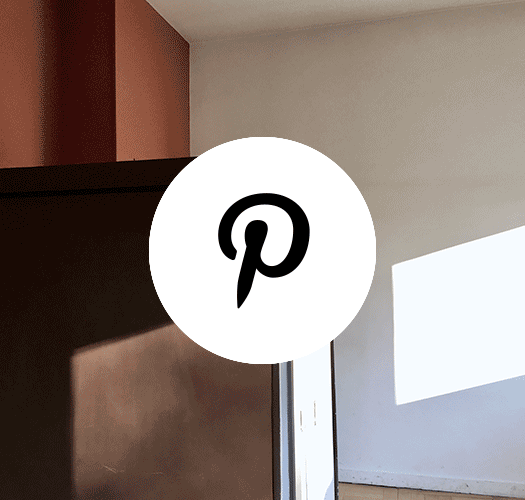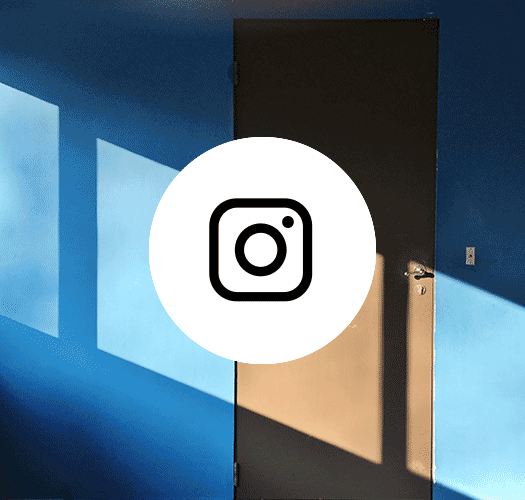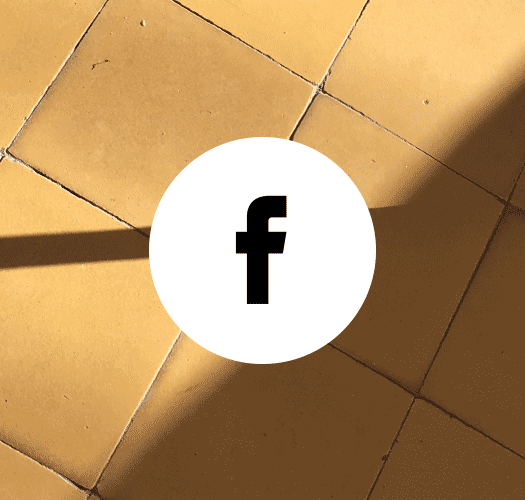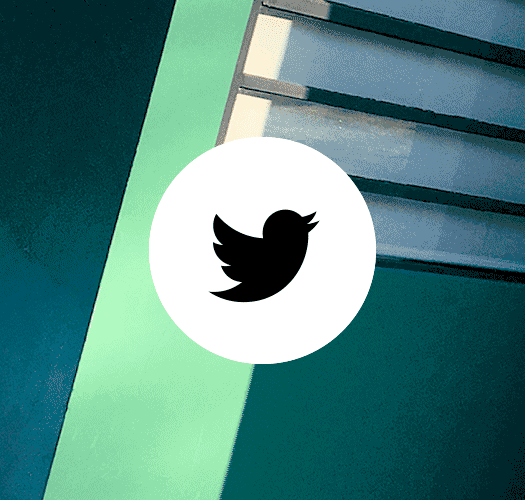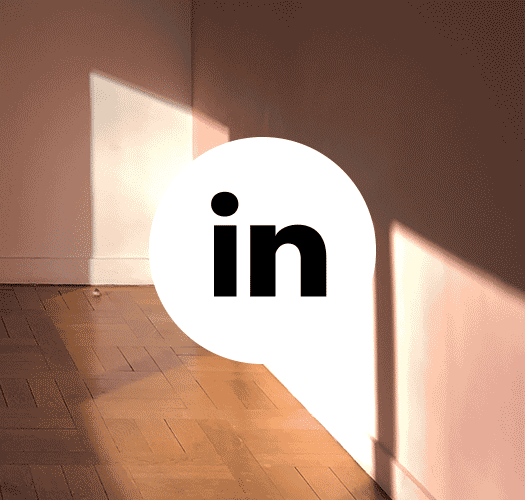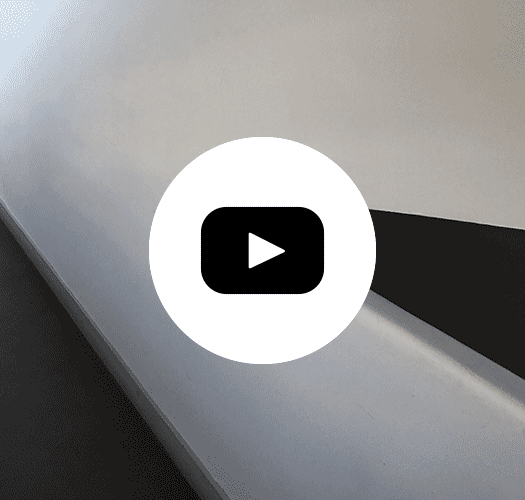Le Corbusier’s residential unit ‹Type Berlin› – a dialogue between building, people and colour
The autonomously functioning two-storey apartment block in the style of the world-famous residential building type "Unité d'Habitation" (UH) in Berlin-Charlottenburg differs in some architectural features from its sisters in France. So, the German building regulations argued against the original ceiling height, the community place on the roof terrace and also the famous Brise-Soleil. On the occasion of its 60th anniversary, the Paris artist Florence Cosnefroy developed a project with Le Corbusier's colour keyboards to build a bridge from France to Germany. ‹Colour dialogue›: The dialogue between countries, between people and between colour.
Colour, people and concrete – a dialogue
The Parisian artist Florence Cosnefroy realised several exhibitions at various locations of buildings Le Corbusiers with reference to his Architectural Polychromy, i.a. in Fortaleza Brazil, Paris, Marseille and Rezé in the recent years.
Commenting on her latest installation, Cosnefroy explains: "On the windows of the 'Waschhaus', transparent colour foils have been applied, which are aligned with the coloured diagonals of the loggias. I extended the blue and red diagonals downwards. Since yellow can be seen on many loggias, I have decided to use this colour as well. As a result, the design of the exterior window fronts refers to the striking diagonal colour surfaces of the façade and thus creates a dialogue.
The glass house construction of today's so-called 'Waschhaus', which is added to the building, is completely enclosed by the main building and provides a community place and functions as an event room for the residents." The washhouse, which is built between four pilotis and occupies the entire depth of the building, was at that time the central heating power station. Excerpts from interviews with residents and their associations with colours are presented in the foyer on large-format coloured fans. And among them are some of the residents who have been living there since the opening in 1958.
"I am pleased that we have the opportunity to exchange in the spirit of friendship, that is the true spirit of the colour dialogue."
- Florence Cosnefroy, Artist -
The artist is convinced of the added value of colour: let it be a green painted living room, which forms the extension to the adjacent garden or the feeling of reassurance, energy or joy. "Colour affects space physically and affects the human psyche, so the possibilities that arise in colour design are great. Personally, I do not like patterns, because the dynamics and variety of a monotonous colour can already be seen through simple light and shadow play. It is also beneficial and efficient in architecture and design. That's why I like to use the colour system by Le Corbusier for my creative work, which not only provides matte colours and harmonious combinations, but is also timeless. The Architectural Polychromy is unlike any other colour theory and its historical significance makes it very attractive for architects and designers to work with the Le Corbusier colours."
Le Corbusier's ‹Unité d'Habitation› type Berlin
As part of the international building exhibition 'Interbau', the Berlin Corbusier house was built in 1957 as a social housing within one and a half year and inaugurated the following year. During the construction phase, Le Corbusier had to deal with the House of Representatives of Berlin in many discussions since, in their opinion, an infringement of the German building regulations took place.
"I have worked out the plans for the dwelling unit [...] with great care and harmony, and I can assert that today an architectural work of art would be on the Olympic hill of Berlin if my plans had been realised in their entirety."
- Le Corbusier -
Thus, to the great displeasure of the architect, the ceiling height of the total of 530 apartments of 2.26 m (a Modulor measurement, which was implemented in all other Unité's) increased to 2.50 m. It lacks the Brise-Soleil on the loggias, the usual roof terrace and the shopping street - these are the only places for communication of the community. The residents could only use the foyer as a community room. Furthermore, the building should be planned for widows, bachelors and childless couples, instead of pursuing the original idea of each Unité to let move in multi-member families.
But Le Corbusier was able to implement features which were the most important to him. Among other things, the idea that: "Residents nevertheless share in the 'conditions of nature' - sun, space, green. This is the modern city: under the sun, in open space, surrounded by greenery. " And that’s still what it looks like when you’re looking from a balcony in the upper levels. In the east, the entire Berlin skyline, in the west the seemingly endless Grunewald. Whether in the glow of the morning or evening sun, the observer actually feels free and easy.
Colour design in the Unité d'Habitation in Berlin
As he did in every Unité d'habitation, Le Corbusier chose the colours for the foyer, decided the colour design of the so-called 'streets' and staircases and even the different colours of the apartment doors, which should facilitate the tenant's visual orientation. Today, only the foyer elements and the doors in the streets are coloured.
However, the unique feature of any UH is the coloured walls and ceilings of each loggia. But the ones in Berlin differ from those of other Unités in shape and colour. For example, Le Corbusier demanded an 'absolute' black, a colour that was completely new at the time when it came to the colour design of façades, but reinforced the graphic aspect of the façade design.
In the archives of the Fondation Le Corbusier, Florence Cosnefroy found notes that prove that the architect did actually have the intention to realise a very visual façade in Berlin so as to divert attention from the actual realisation of the windows that did not meet his specifications. Because here the absence of the Brise-Soleil elements in the loggias and the installation of window ribbons in the upper floor led to frontally visible wall surfaces. For these, Le Corbusier designed a colour scheme with beveled colour surfaces to prevent the monotony in the façade view and to distract the eye from the architectural deviations.
Whether it was Le Corbusier's intention or not, the dark diagonals of the loggias have another effect, as a resident of the housing machine says: "When we looked at a photo of our loggia, we could not tell if the black triangle was a shadow or part of the colour design. The diagonal lines completely continue the shaded shapes. The patterns vary according to the time of the day. "Through the juxtaposition of coloured geometric shapes, Le Corbusier plays with light and shadow, thus creating an impression of the missing shadow of the Brise-Soleil, which can be admired in sunny weather. The combination of vibrant, bold colours, along with the graphic elements – all this gives the Unité d'habitation in Berlin a unique aesthetic quality and the residents appreciate that colour has become very important to them since they live in the building. As part of the exhibition, a total of 24 interviewees spoke about their associations with the colour of their loggia. For some of them, the red absorbs the aggression in the apartment, for others, the pink glow of the raw concrete in the sunset is almost magical. "The colour accompanies you from the foyer, through the streets, into the apartment and out to the loggia. The combination of concrete and vivid colours enchants me – especially in combination with the warm red. The façade reminds me of a toy of my childhood: wooden tiles in geometric shapes and vibrant colours. The colour play in my loggia is different every day." A lady who lives in the first street (1st floor) painted the living room wall which adjoins the loggia in the same light green, so as to create an extension of the park and the trees. The colour reminds her of the young tree buds that surround her. That colour can also create a feeling of 'homesick', this man explains: "Our first apartment had a yellow painted loggia. The whole interior glowed at the smallest sunbeam, even in the gray winter. For me, coming from Texas, that was wonderful."
Colour dialogue by Florence Cosnefroy
The installation can be visited until 30th September at the Unité d'Habitation, in Berlin-Charlottenburg. The exhibition sections are located - free of entrance - in the public areas of the Corbusierhouse. The exhibition is open daily from 10am to 6pm:
Unité d'Habitation "Typ Berlin"
Flatowallee 16
14055 Berlin
Germany
Photography Copyright
© Florence Cosnefroy, Farbdialog - Corbusierhaus, Berlin / FLC-ADAGP
© Les Couleurs Suisse
© Bärbel Högner


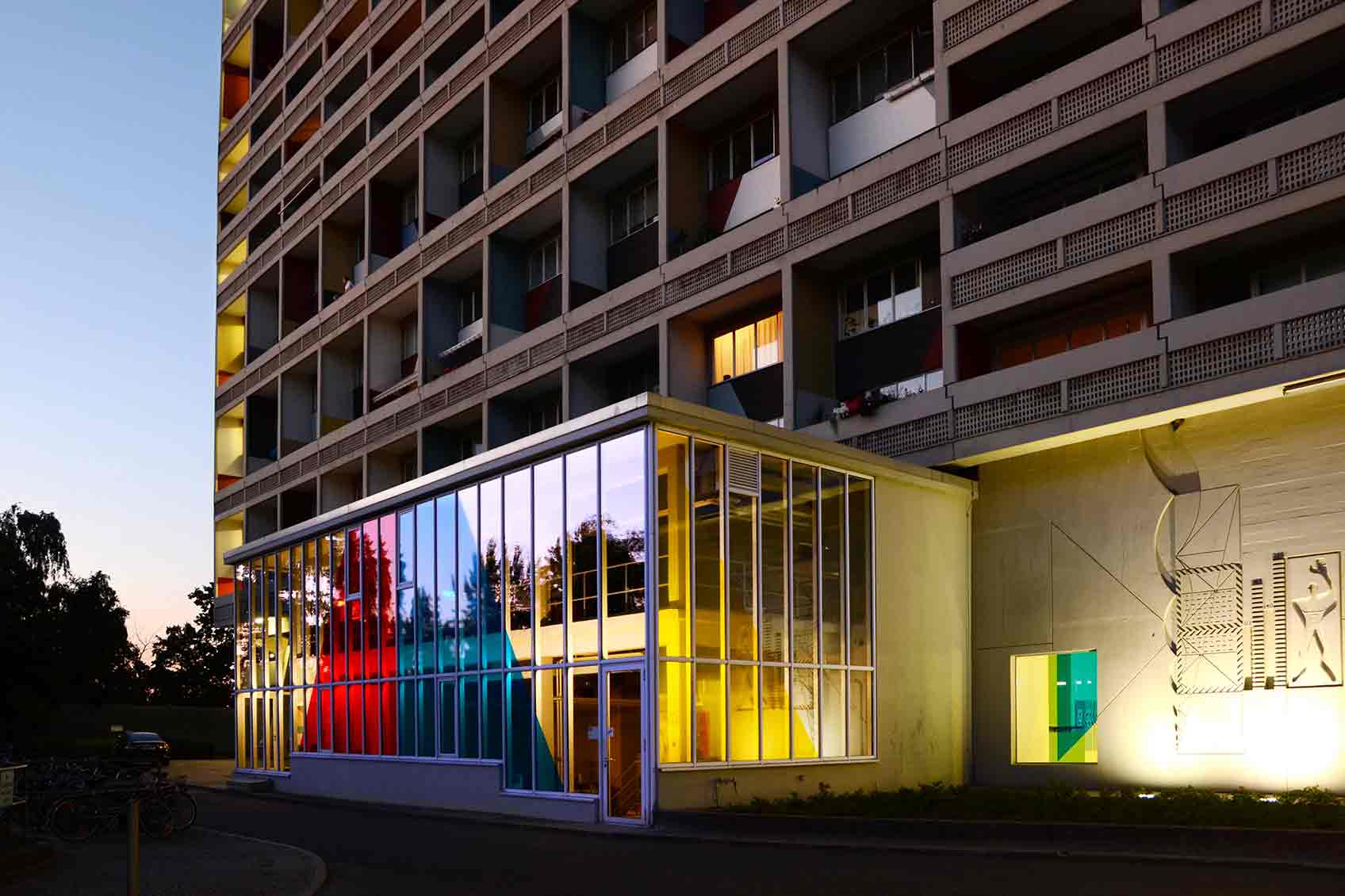
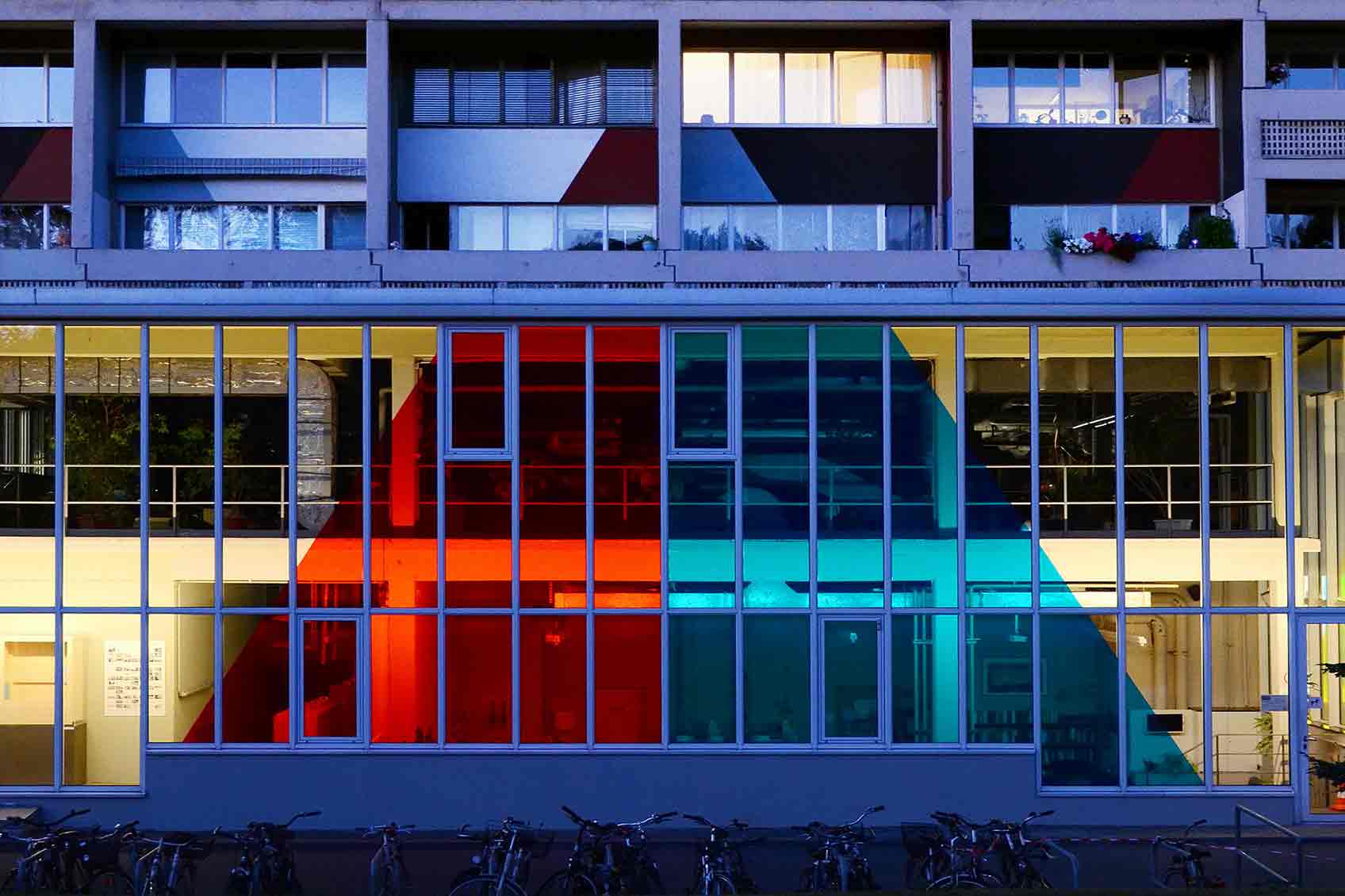
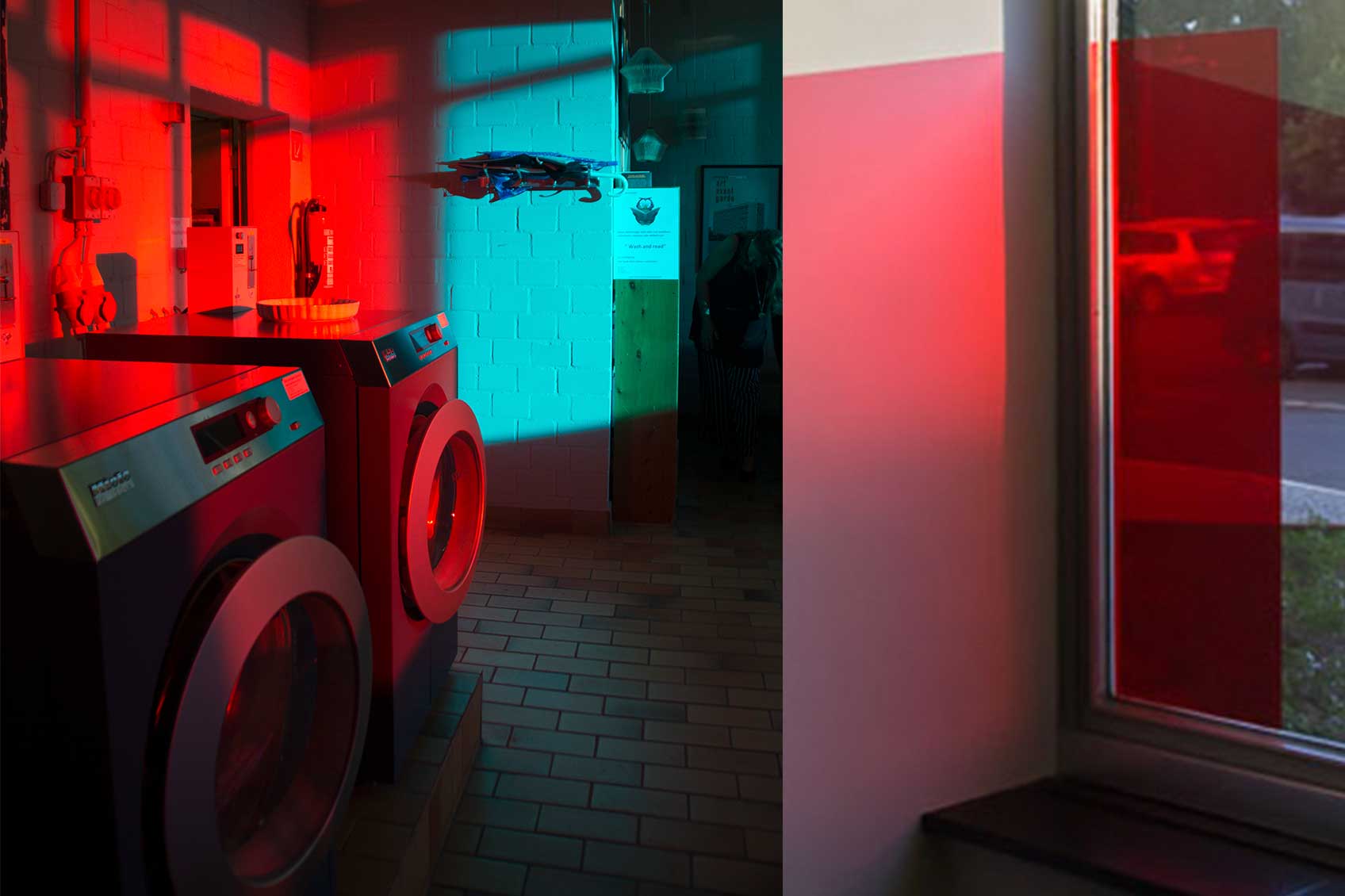
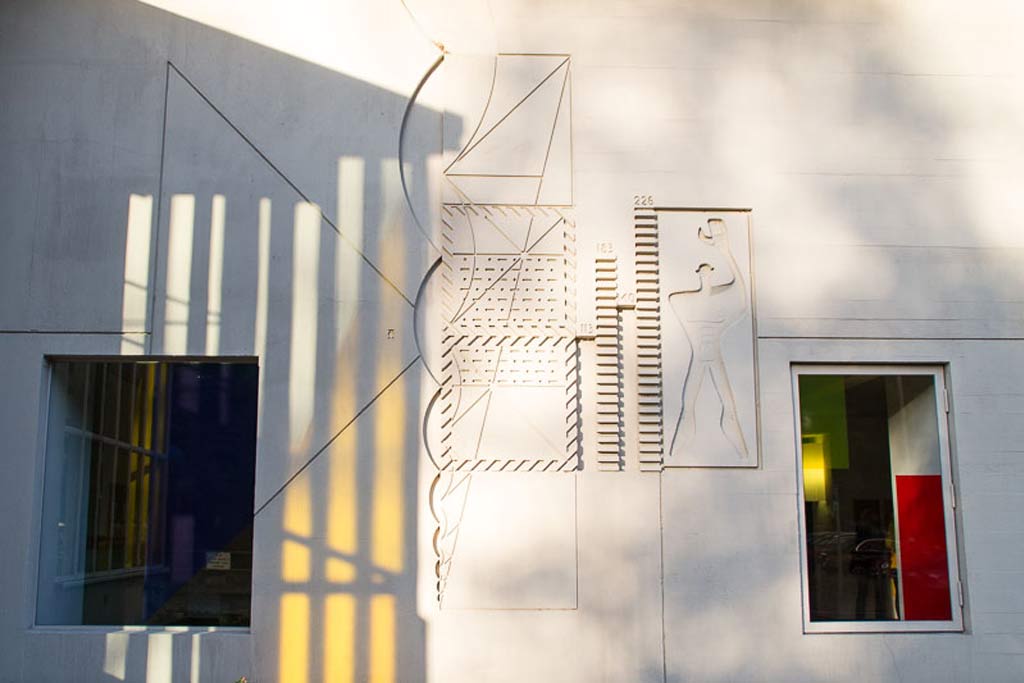
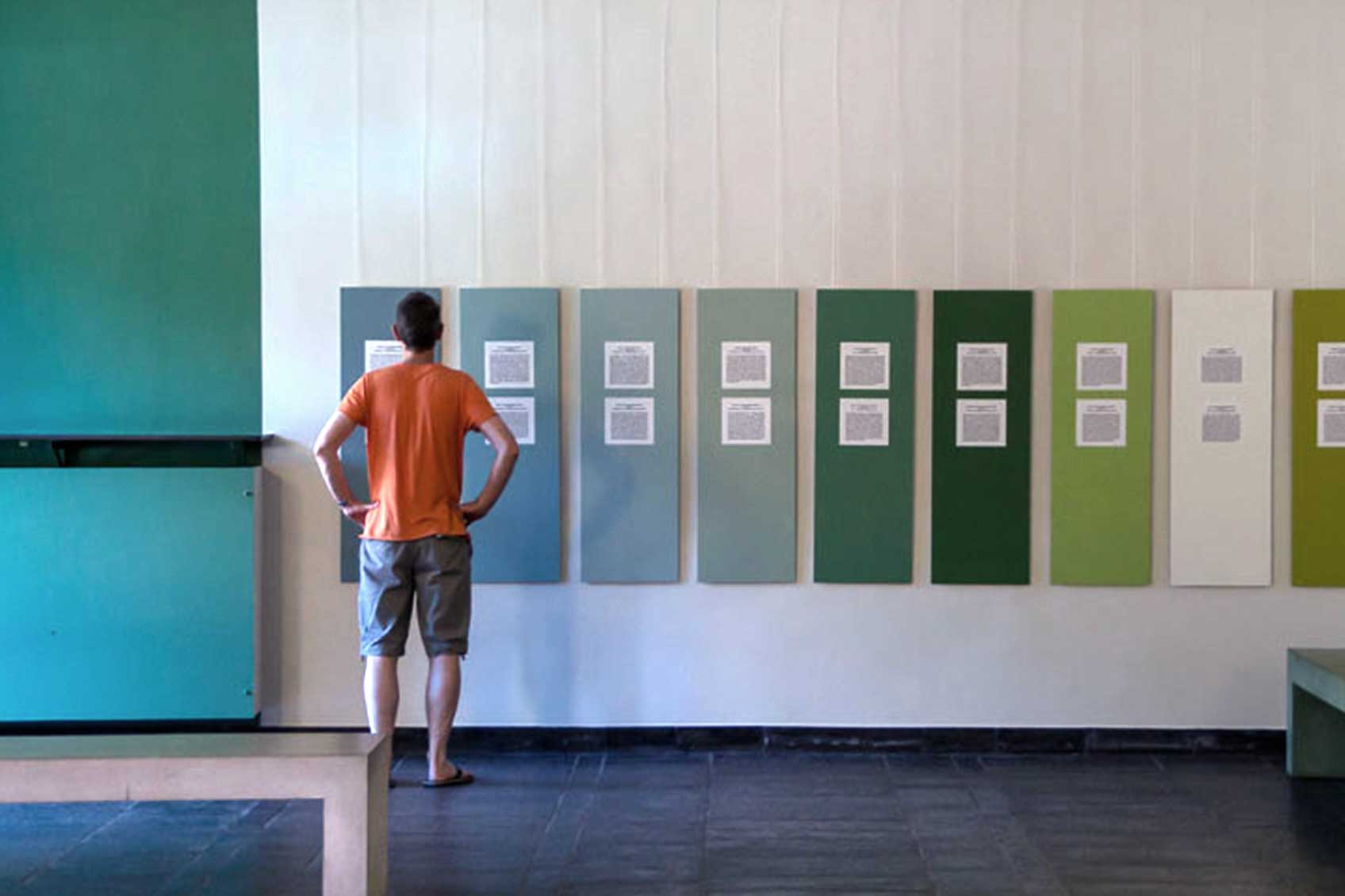
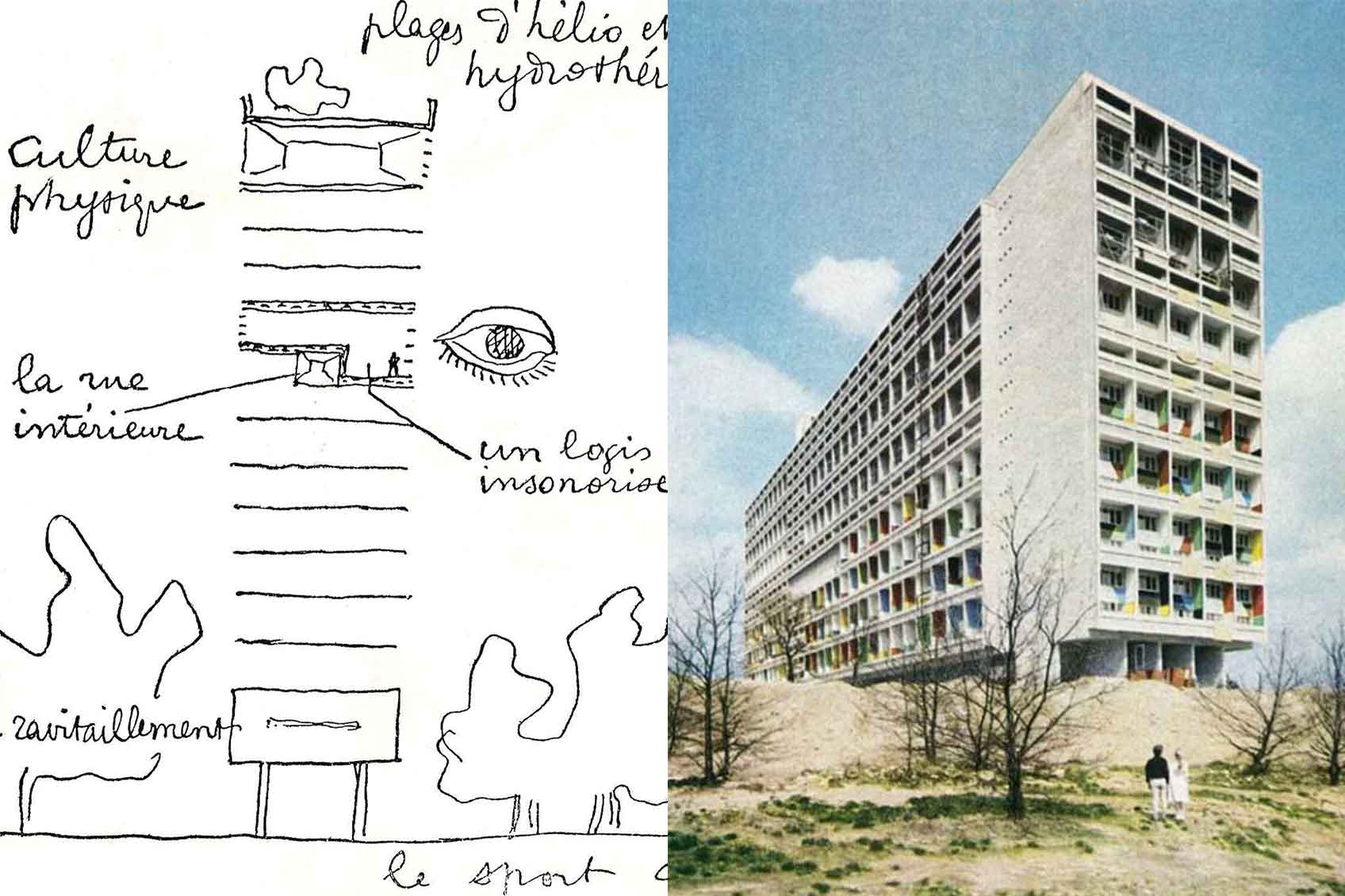
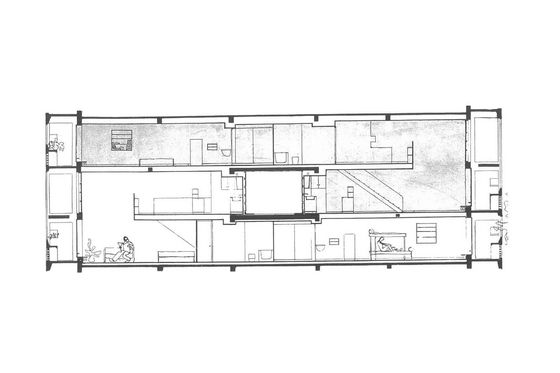
![[Translate to EN:] Corbusierhaus Berlin ©LCS [Translate to EN:] Corbusierhaus Berlin; Fassade mit farbiger Brise-Soleil](/fileadmin/media/journal/Le_Corbusier/Farbdialog/Corbusierhaus-Berlin-Farbdialog-Florence-Cosnefroy-Les-Couleurs-Le-Corbusier-6.jpg)
